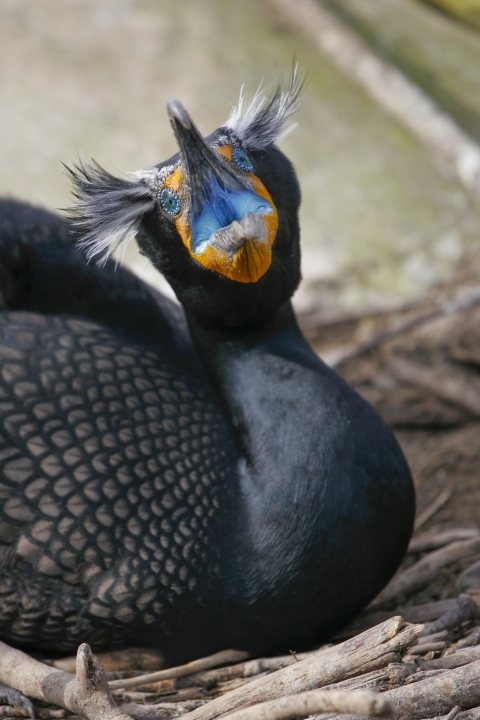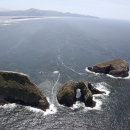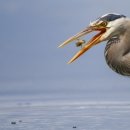About Us
Old-growth forest surrounded by a tumultuous ocean set the primeval scene at Cape Meares. Its cliffs support five species of nesting seabirds and a pair of Peregrine Falcons, a species recovered from the brink of extinction.
Cape Meares National Wildlife Refuge, established in 1938, boasts views of nearby rocky islands, vertical coastal cliffs, and rolling headlands topped with old-growth forest dominated by Sitka Spruce and Western Hemlock.
The cliffs support nesting seabirds including Common Murres, Pigeon Guillemots, Double-crested and Pelagic Cormorants, and Black Oystercatchers. Bald Eagles and Peregrine Falcons, formerly endangered species, nest nearby and appear regularly, causing ruckus among the seabirds.
Cape Meares also offers panoramic views of the Pacific Ocean that encompass both Three Arch Rocks and Oregon Islands National Wildlife Refuges, making it the only location in the United States where three refuges can be seen from one location.
Hikers will enjoy several trails that wind through the headland's old-growth forest. The refuge also harbors the largest Sitka Spruce in Oregon. At 144 feet tall with a circumference of 48 feet and a crown spread of 93 feet, the "champion tree" is estimated to be between 700-800 years old.
From multiple pristine viewpoints, migrating Gray Whales can be seen offshore, along with Harbor Seals and sea lions. The Cape Meares Lighthouse, managed by Oregon State Parks, can be viewed from one of the short trails along the cape.
Our Mission
Each unit of the National Wildlife Refuge System is established to serve a statutory purpose that targets the conservation of native species dependent on its lands and waters. All activities on those acres are reviewed for compatibility with this statutory purpose.
In cooperation with Oregon Parks and Recreation Department, who manages land adjacent to the federal wildlife refuge, we envision natural processes continuing to unfold in the most remote sections of Cape Meares while visitors are welcomed to the viewing decks and trails and invited to observe and learn about this rare, intact functioning coastal ecosystem.
Our History
Named after 18th century British naval officer, trader and explorer John Meares, the cape was formerly maintained by the U.S. Coast Guard for its diminutive lighthouse, Oregon's shortest. The lighthouse still stands, just outside what would become Cape Meares National Wildlife Refuge. "Cape Meares Migratory Bird Refuge" as it was originally named was established in 1938 "as a refuge and breeding ground for migratory birds and other wildlife" by an executive order signed during the Roosevelt Administration. The Refuge was christened with its current name in 1940.
Cape Meares headland has been managed as a Refuge and State Scenic Viewpoint in cooperation with the Oregon Parks and Recreation Department (OPRD) since its establishment. The U.S. Fish and wildlife Service manages the wildlife refuge portion of the cape and leads forest resource management while OPRD maintains the State Park and most visitor services.
In 1987, the Service designated the Refuge (excluding the portion of the Oregon Coast Trail) as a Research Natural Area (RNA) to further protect its unique vegetation, geology, wildlife, and habitat in a naturally functioning ecosystem. RNAs are areas where natural processes are allowed to predominate without human intervention. Activities in RNAs are limited to research, study, observation, monitoring and educational activities that are non-destructive, non-manipulative, and maintain unmodified conditions. Cape Meares was considered an important site for inclusion into the RNA program as it is one of the few remaining stands of old-growth Sitka Spruce along the northern Oregon Coast.
Today, Cape Meares National Wildlife Refuge and State Scenic Viewpoint hosts thousands of visitors each year. The hiking trails, viewing decks, lighthouse, and wildlife viewing opportunities attract visitors from all over the world. Cape Meares National Wildlife Refuge is managed to preserve the unique habitats, plants, and animals of the area without interference from humans, while maintaining unaltered ecosystems on which to conduct research.
Other Facilities in this Complex
Cape Meares National Wildlife Refuge is managed as one of six refuges in the Oregon Coast National Wildlife Refuge Complex. See below for the other five refuges and experience them all.
Oregon Coast National Wildlife Refuge Complex
2127 SE Marine Science Drive
Newport, OR 97365
541-867-4550
oregoncoast@fws.gov
What is a Refuge Complex?
A National Wildlife Refuge Complex is a group of two or more refuges, wildlife management areas or other refuge conservation areas that are managed from one central office. Refuges are grouped into a complex because they occur in a similar ecological region, such as a watershed or specific habitat type, and have a related purpose and management needs.
The Oregon Coast National Wildlife Refuge Complex is managed from our headquarters in Newport, Oregon. The office located at Bandon Marsh NWR serves as a south-coast field office.







